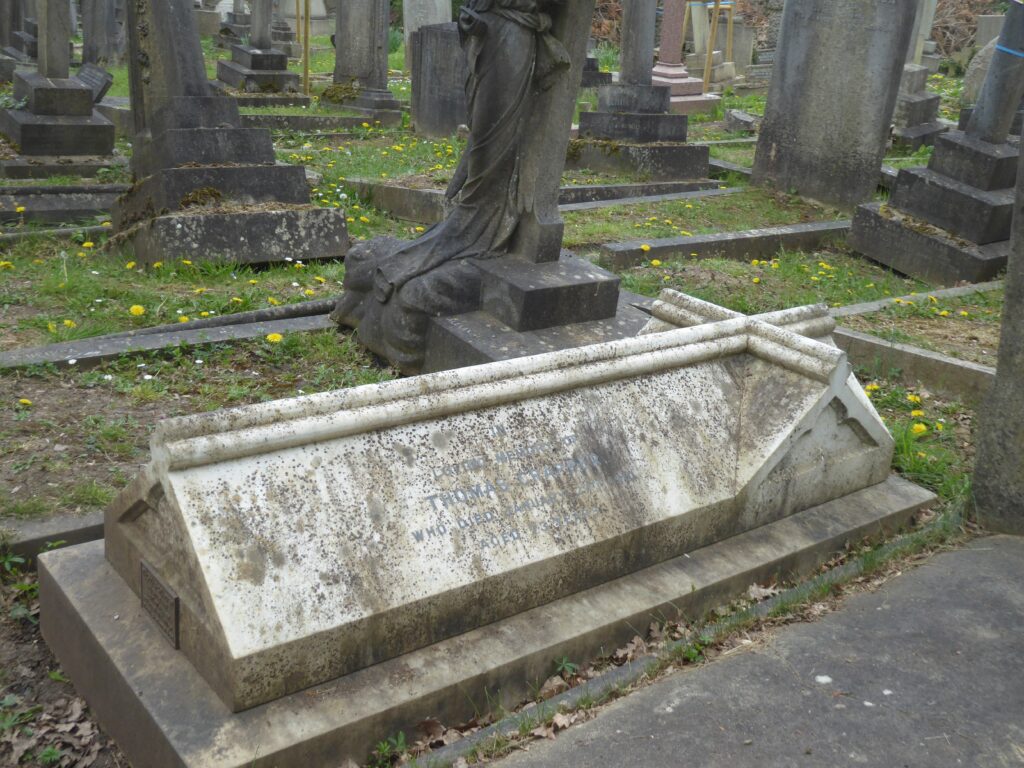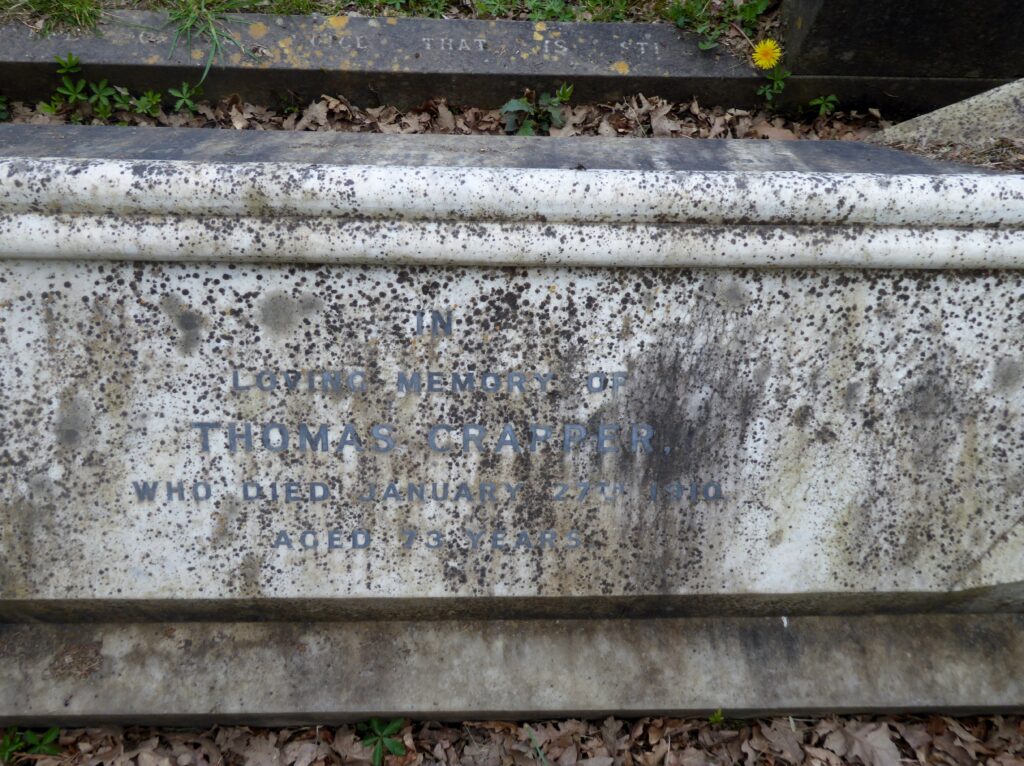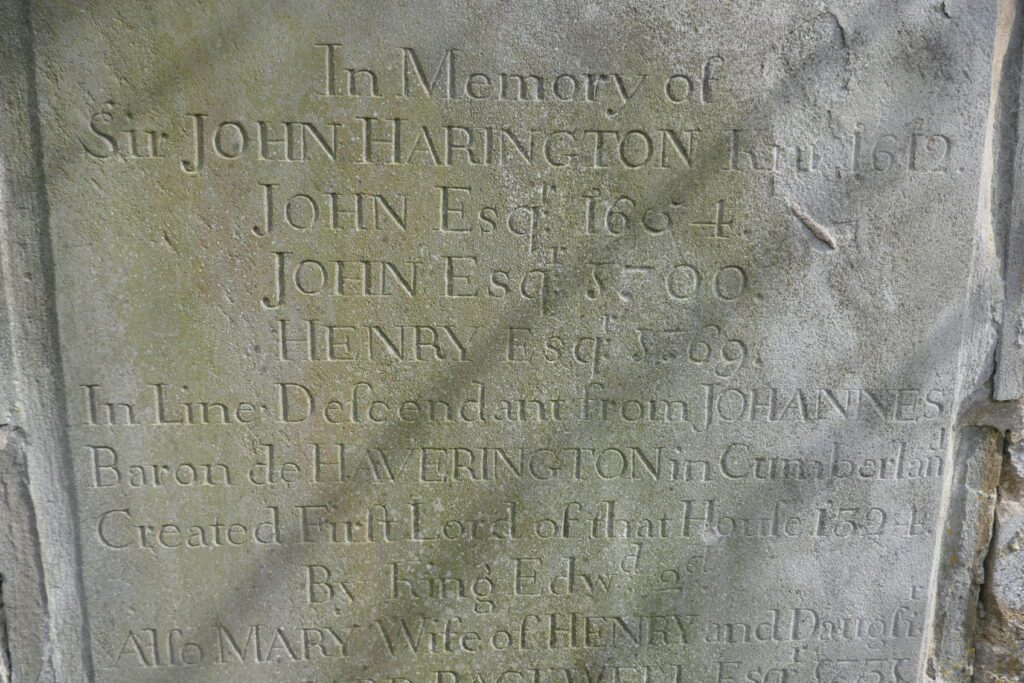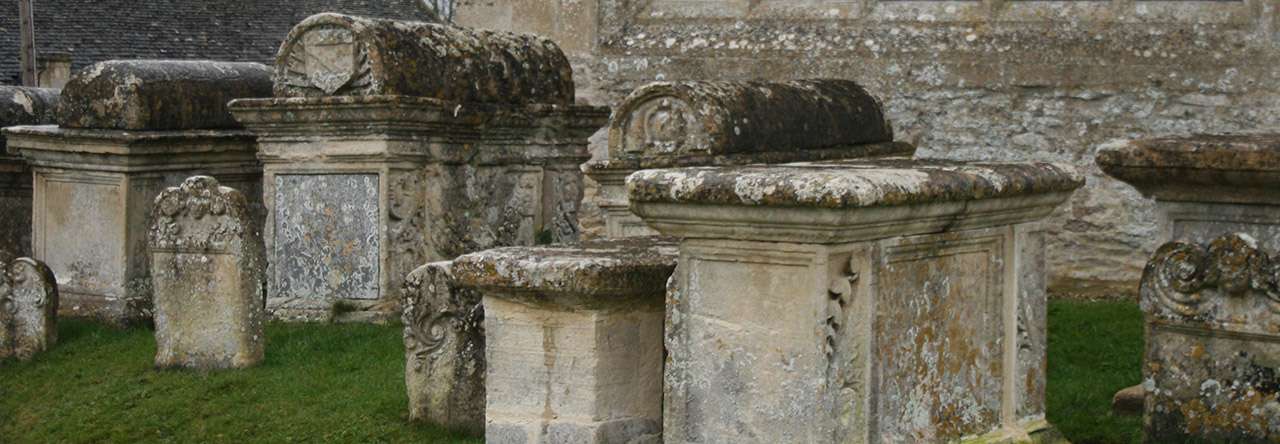Were I allowed but one luxury on a desert island, I would not need to think twice: a luxury bathroom of course, with deep tub, power shower, an endlessly renewing pile of soft towels, an exotic range of soaps, oils, and lotions…and a plumbed in flush lavatory. I have always been grateful that I did not live before the invention of the latter.
I suspect that I am not alone in this, for amongst the soot-stained Victorian and Edwardian tombstones at Elmers End Cemetery in South London, only that of Thomas Crapper (1836-1910) has merited a clean and a new plaque confirming the identity its incumbent.




Urban myth, encouraged by Wallace Reyburn’s fictional biography Flushed with Pride: the Story of Thomas Crapper, avers that Crapper invented the flush lavatory. It further alleges that American servicemen based in England during World War I, seeing his name on sanitary ware, coined the term crapper as a synonym for lavatory, and the vulgar slang for bodily waste followed. In fact, the word is of Middle English origin, originally denoting chaff, weeds, or other rubbish, and the flush lavatory predated Thomas Crapper.
T.C. Crapper and Co. did produce sanitary ware. Moreover the plumber and businessman was responsible for several improvements in flush lavatories including the introduction of the floating ballcock, silencers to cut out the noise of the cistern filling, and the invention of the U-bend plumbing trap, an improvement on the earlier S-bend, preventing sewer gases from entering the water closet. Less successful were his attempts to produce an automatic flush and a self-raising seat.
When he opened the world’s first bath, lavatory, and sink showroom at 120 King’s Road in 1870 Victorian ladies putatively grew faint at the sight of the porcelain displayed behind the huge plate glass windows. His famous “try before you buy” policy probably offended their sensibilities too.
But if Thomas Crapper did not invent the flush lavatory who did? In the 1440s Ralph Cromwell, Treasurer to Henry VI, built a high tower, topped by a cistern to gather rainwater, at Wingfield Manor in Derbyshire. When the sluice holding back the water in the cistern was opened once a week the water came down through a chimney-like structure flushing out the latrine below into the moat. Similarly, cisterns on the roofs of houses in Medieval London had discharged water into lead pipes which flushed the contents of the latrines into the streets.
Despite these early examples, the credit for inventing the first flush lavatory is usually attributed to John Harington (1560-1612), courtier, author, and translator. Certainly his system was more sophisticated (there was a porcelain bowl, there was a drain) and garnered greater publicity. Harington installed a flush lavatory at his manor house in Kelston, Somerset. A description of this device which used the force of water from a cistern operated by a valve to flush out the bowl into a drain appeared in his book “A New Discourse on a Stale Subject, called the Metamorphosis of Ajax,” published in 1596. Calling his invention Ajax was a play on “jakes”, a sixteenth century euphemism for outhouses or privies.
But the essay was not a mere description of the invention, it was also a coded attack on the Earl of Leicester whom Harington held responsible for the stercus or excrement that was poisoning society in the form of torture and state sponsored libels – of which Harington’s relatives had fallen victim. The political allegory was none too subtle, and Harington was temporarily banished from court for his attack on the Queen’s favourite.
Despite her disapproval of his politics Elizabeth did have one of his devices installed at her palace in Richmond, Surrey. But the expense combined with the lack of an S or U bend to curb smells prevented the Ajax from achieving wider popularity.
That deficiency was remedied by Alexander Cumming who, in 1775, patented the S-bend which retained water permanently in the waste pipe thus preventing sewer gases from entering buildings. So, the invention was complete almost a century before Thomas Crapper opened his show rooms.
Harington’s gravestone can be found in Kelston churchyard, but while providing a detailed account of his genealogy, disappointingly it makes no reference to his invention.




Cumming was buried in the graveyard of St. James Chapel, Pentonville, north London. The chapel was later demolished and the cemetery turned into Joseph Grimaldi Park. As the name implies, Grimaldi’s gravestone was rescued and is a centre piece of the park, but sadly that of Cumming disappeared.
*************
For photographs of Thomas Crapper’s products, (and another tomb) see At God’s Convenience, February 29, 2024, by the incomparable Gentle Author, https://spitalfieldslife.com>2024/02/29>at-gods-convenience
